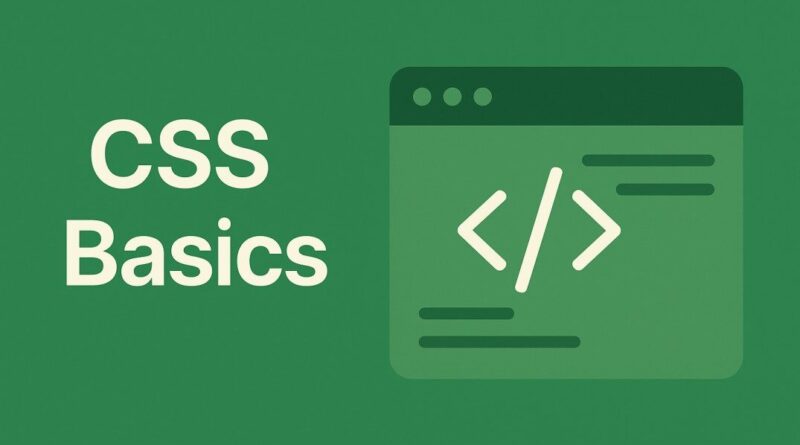CSS – CSS Specificity, Inheritance, and the Cascade – The Cascade
Hey there, web design enthusiasts! Ever wondered why sometimes your CSS rules seem to have a mind of their own, or why one style overrides another even when you swear yours should be the boss? Well, today we’re pulling back the curtain on a core concept in CSS: The Cascade.
Think of the cascade as the ultimate rulebook that determines which CSS styles get applied when there are multiple, potentially conflicting instructions. It’s how your browser makes sense of all the different styles trying to influence your webpage. Let’s dive into the fascinating interplay of stylesheets and rules!
The Dance of Multiple Stylesheets and Rules
Imagine your webpage is a canvas, and different artists are trying to paint on it. Each artist represents a stylesheet or a set of CSS rules.
- Your Stylesheet: This is the CSS you write yourself, meticulously crafting the look and feel of your website. It’s your artistic vision coming to life!
- External Stylesheets: You might be using a CSS framework like Bootstrap, or a library that provides its own styling. These are like guest artists, adding their pre-defined strokes to your canvas.
- Inline Styles: Sometimes, you might add a
styleattribute directly to an HTML element. Think of these as quick, on-the-spot touch-ups to a specific spot on your canvas.
The Cascade is what orchestrates how all these different sources of styles interact. It’s not chaos; it’s a finely tuned system that prioritizes certain styles over others to ensure a consistent and predictable outcome.
The Hierarchy of Influence: Who’s the Boss?
When conflicting styles arise, the Cascade has a clear pecking order. It’s like a courtroom where different parties present their case, and the judge (your browser) decides whose argument wins. Here’s the order of importance, from the least to the most powerful:
- User Agent Styles (The Browser’s Defaults): Every web browser comes with its own built-in stylesheet. These are the default styles that make unstyled HTML look somewhat readable (e.g., how links are underlined, or how headings appear). Think of these as the initial, basic blueprint provided by the browser. They’re the foundation, but easily overridden.
- User Styles (Your Visitors’ Preferences): This is a lesser-known but powerful aspect! Users can, in some browsers, set up their own custom stylesheets. For example, someone with low vision might have a stylesheet that forces all text to be larger or changes background colors for better contrast. These styles are designed to enhance accessibility and user experience, and they take precedence over the browser’s defaults.
- Author Styles (Your Creative Vision!): This is your CSS! The styles you write in your stylesheets, whether internal, external, or inline. These are paramount in defining your website’s unique aesthetic. The browser gives your design choices significant weight, overriding both user agent and user styles (unless the user uses
!important, which we’ll touch on another time!).
Understanding this hierarchy is crucial. If you’re struggling to get your styles to apply, always consider if a higher-priority stylesheet might be at play!
The Tie-Breaker: Order of Declaration
So, what happens if you have two styles from the same level of importance (e.g., two rules within your own author stylesheet) that target the same element and property? This is where the order of declaration comes into play.
It’s simple: the last declared rule wins.
Imagine you’re giving instructions to a painter. If you say “paint the wall blue,” and then later say “paint the wall red,” the wall will end up red. The last instruction you gave takes precedence.
Example:
CSS
p {
color: blue; /* This will be overridden */
}
p {
color: red; /* This one wins! */
In this case, all paragraphs (<p>) will be red, because the color: red; rule was declared after color: blue;. This is incredibly important for maintaining control over your styles and debugging unexpected behavior.
Why Does All This Matter? The Power of Prediction!
Mastering the Cascade isn’t just about memorizing rules; it’s about gaining predictability and control over your web designs. When you understand how CSS prioritizes and combines styles, you can:
- Debug More Effectively: No more head-scratching moments trying to figure out why a style isn’t applying. You’ll know exactly where to look!
- Write Cleaner, More Efficient CSS: By understanding the cascade, you can avoid unnecessary overwrites and keep your stylesheets lean.
- Build Robust and Maintainable Websites: Predictable styling leads to fewer unexpected issues down the line, making your websites easier to update and expand.
- Collaborate Seamlessly: When working in a team, understanding the cascade ensures everyone is on the same page about how styles will interact.
The Cascade is a fundamental pillar of CSS. It’s what allows for the incredible flexibility and power of styling on the web. So, next time you’re crafting your CSS, remember the Cascade and its intricate rules – it’s the invisible force making your designs come to life!
What are your biggest “Aha!” moments with the CSS Cascade? Share your experiences in the comments below! We’d love to hear from you!



